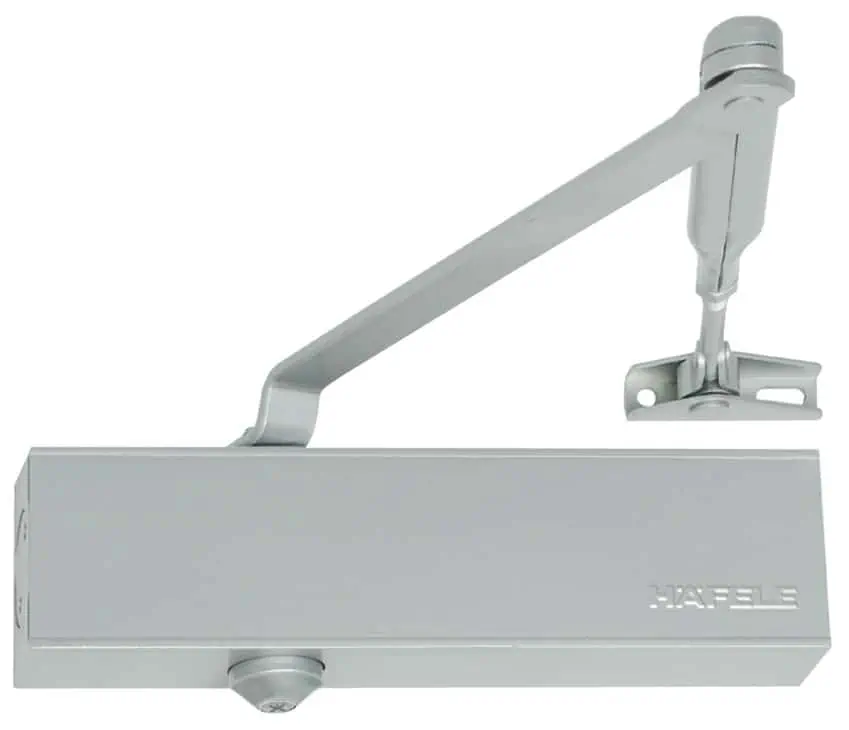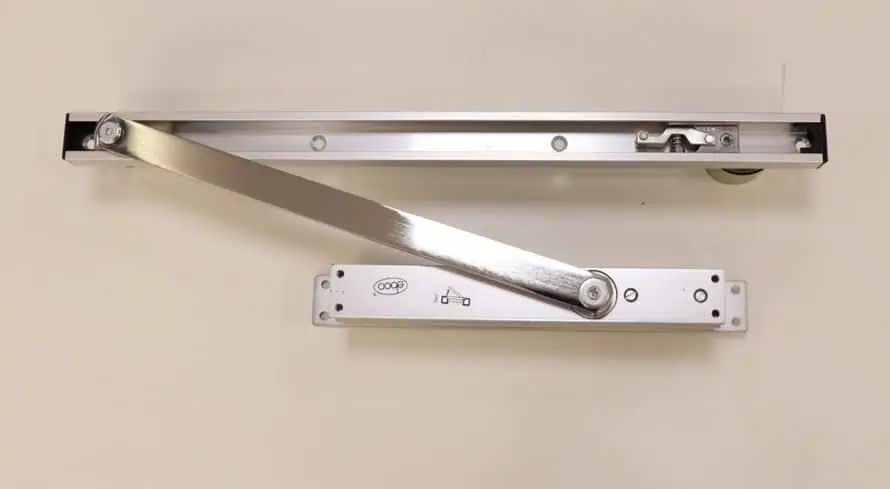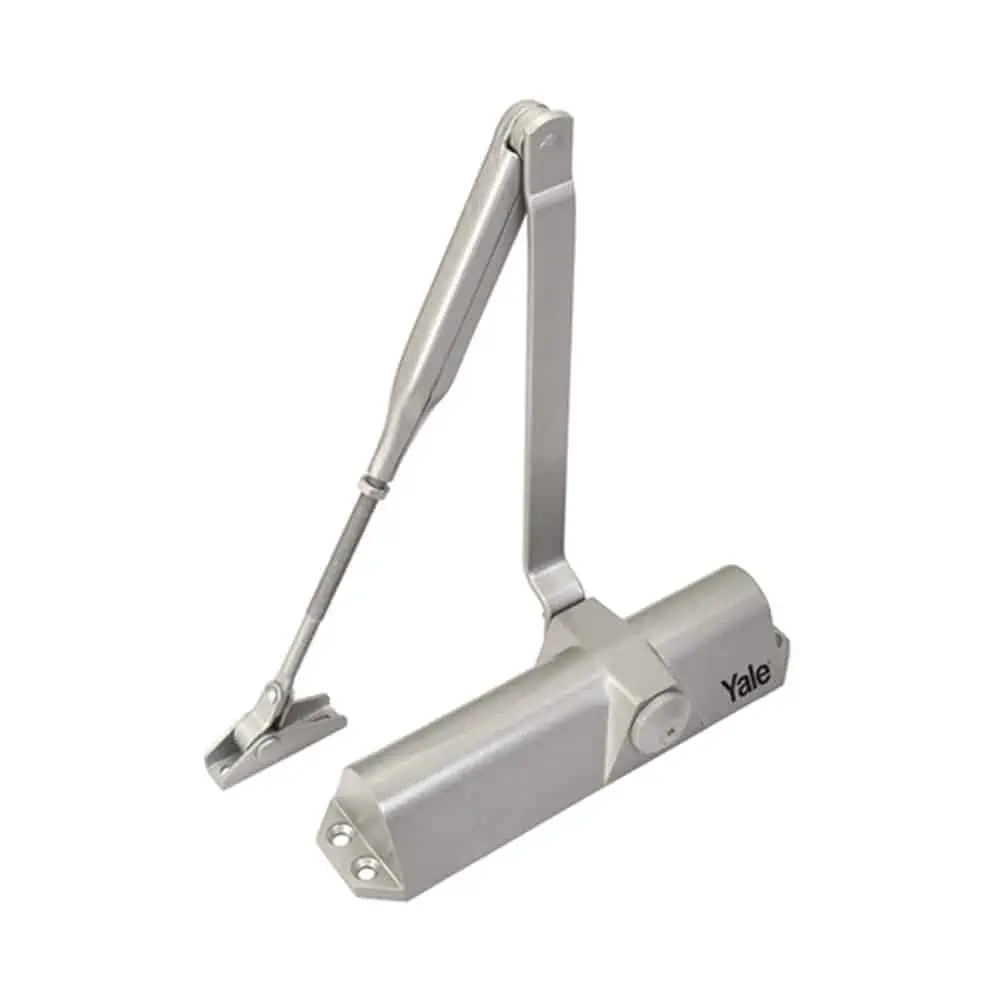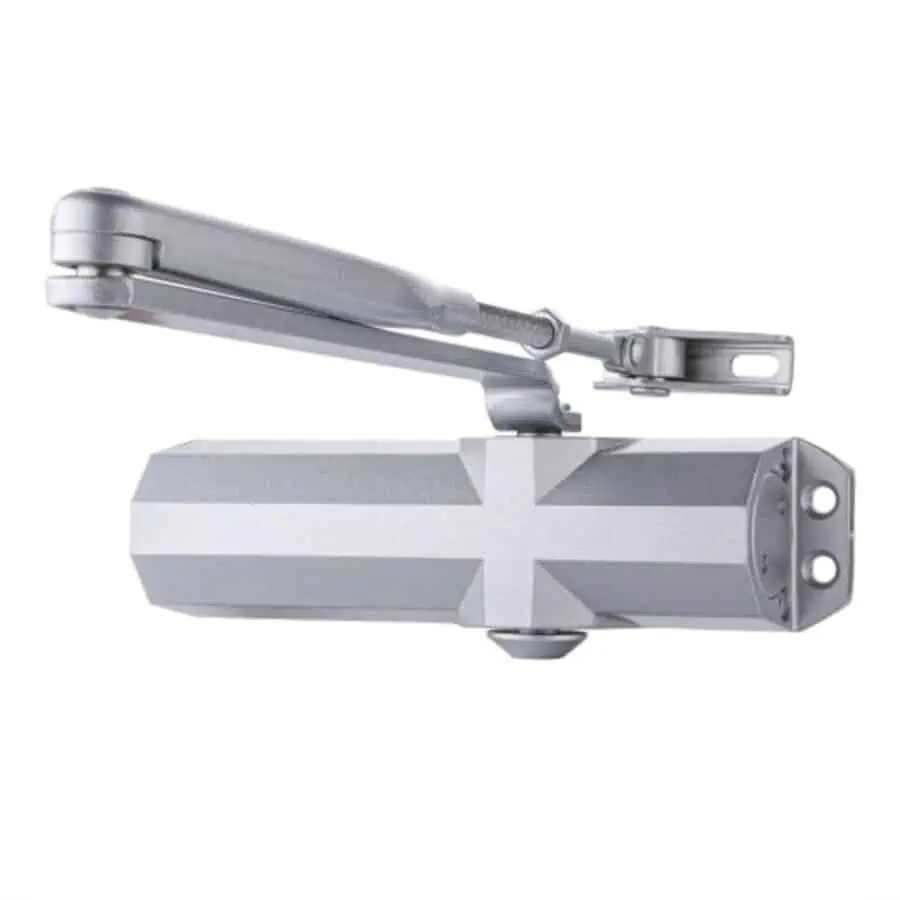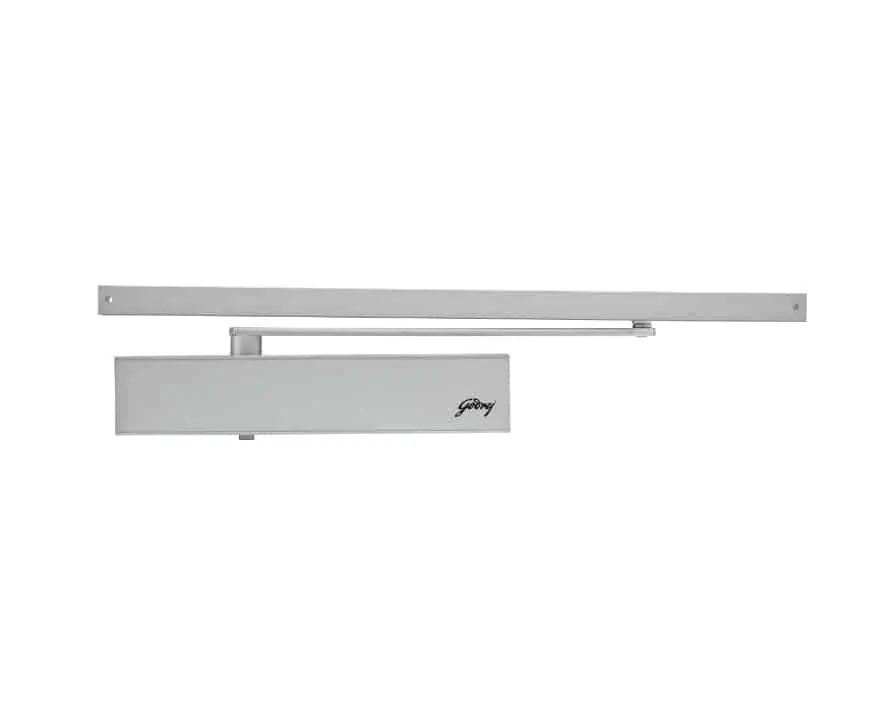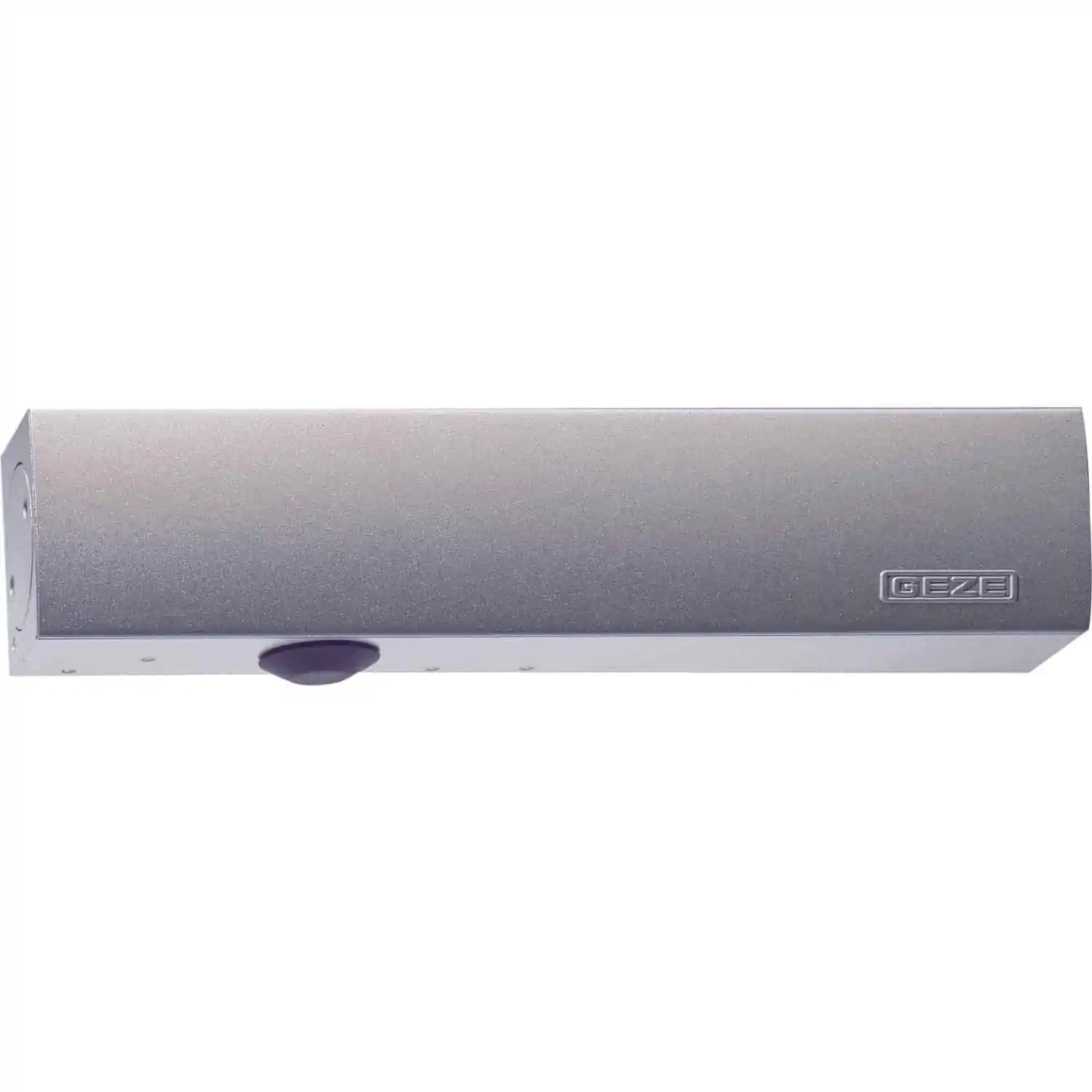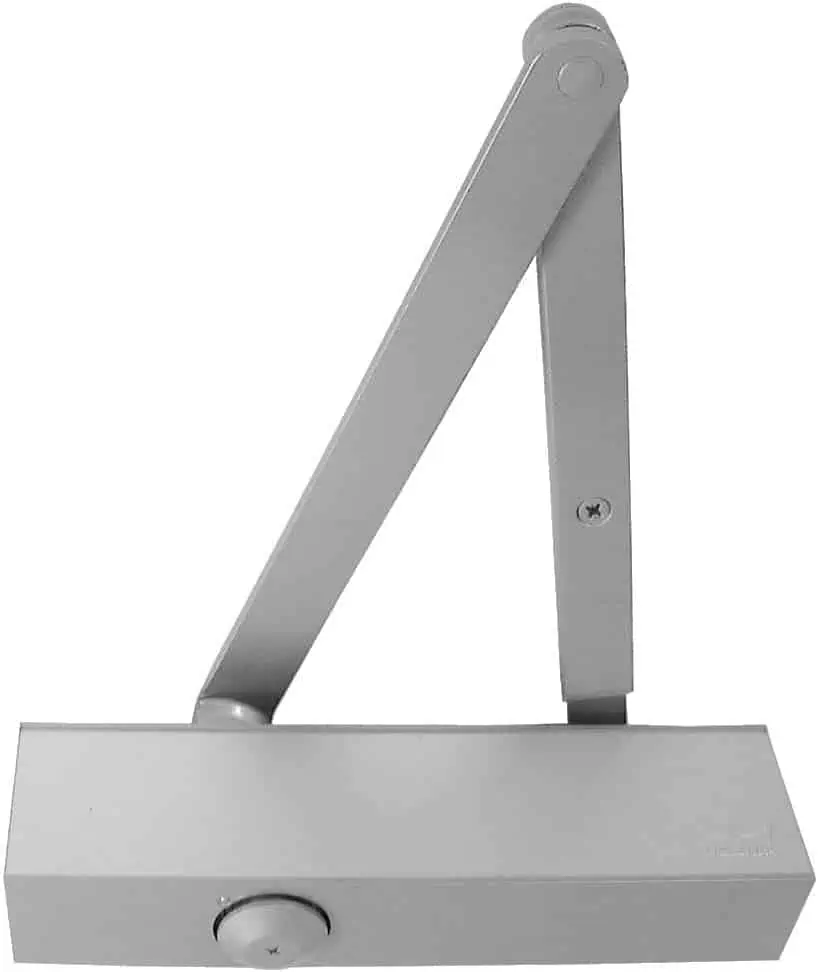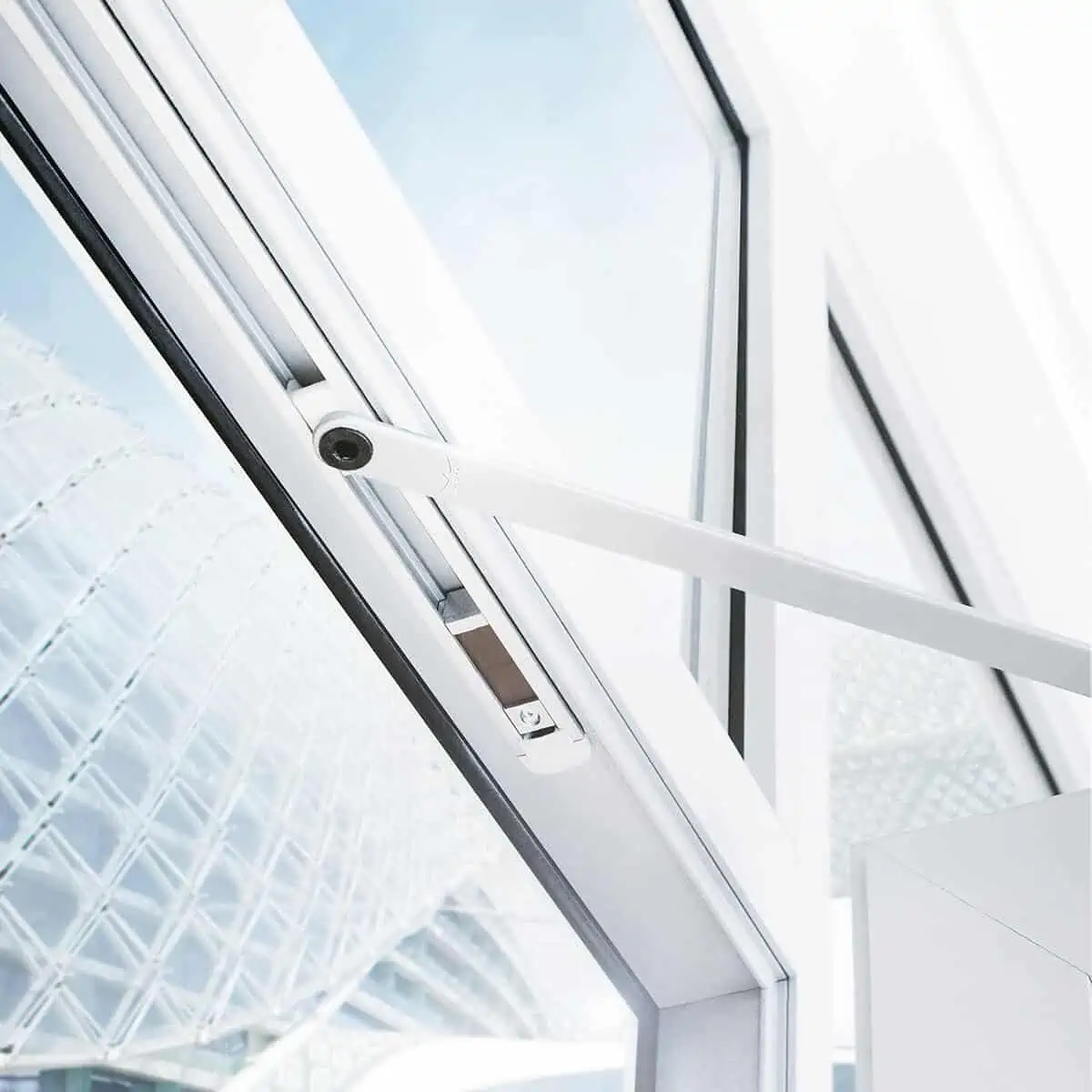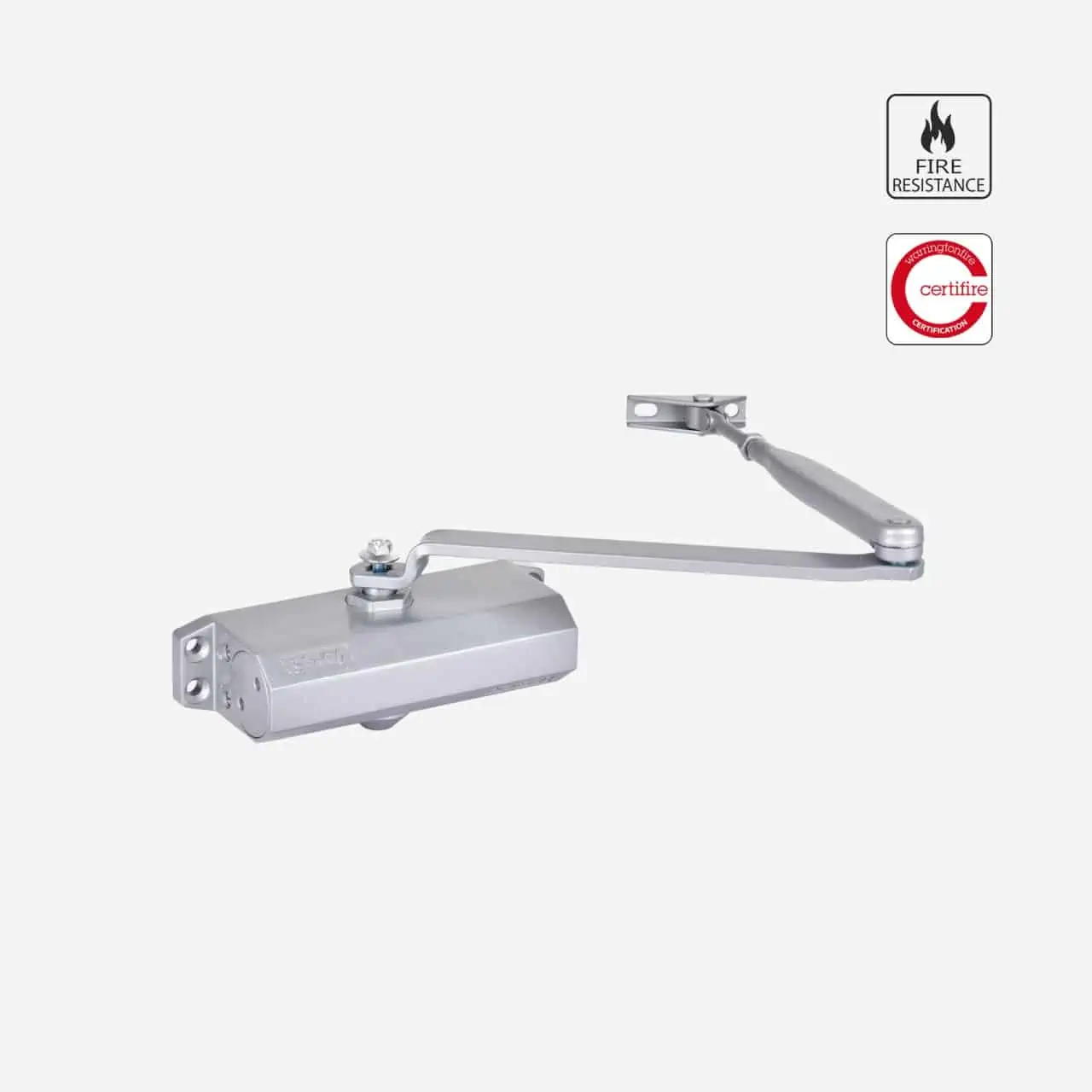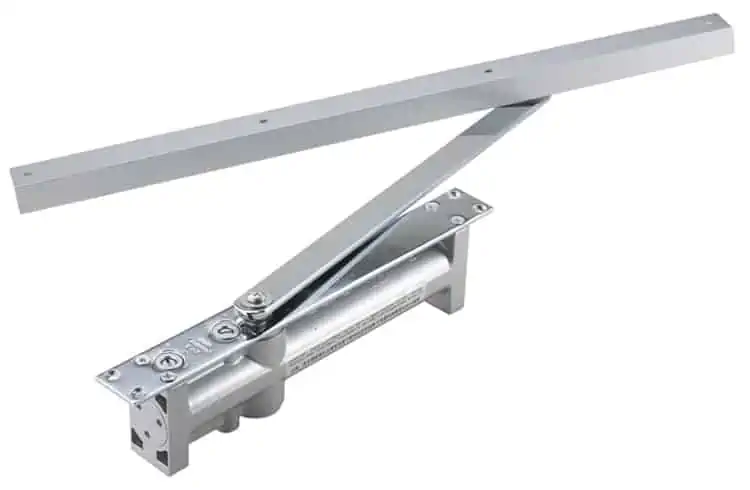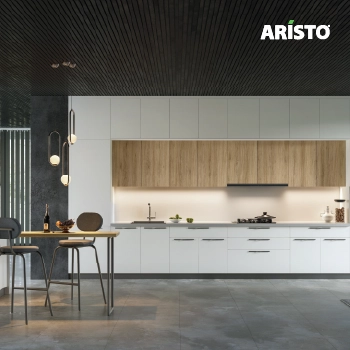Slamming doors might seem like a mere inconvenience but it’s much more than that. A violently closing door can cause minor to major injuries especially when you have kids at home. Serious injuries include the severing of a finger or a small leg bone. To prevent them, a very effective solution is a door closer. It is a mechanical device that closes a door automatically at a controlled speed to prevent it from banging. However, speed regulation is not the only function it serves. It also prevents property damage and discomfort of building occupants due to the loud banging noise of the doors. Furthermore, it keeps the fire doors closed thereby minimising the spreading of smoke. A door closer usually operates with the help of some kind of spring and is available in various types such as automatic, manual, concealed, etc. that use oil-filled hydraulic dampers.
So, getting this simple yet effective device installed, especially in windy regions, is advisable. Furthermore, a closer is especially useful for commercial spaces such as offices, stores, retail outlets, etc., as these areas tend to be busy and are more likely to require shifting of heavy loads. Therefore, in this article, we give you comprehensive information about door closer, its types, functions, working mechanism, and convenient buying links for hassle-free shopping.
Contents
- 1 Functions of a door closer
- 2 Types of door closers
- 3 Working principle
- 4 Buy functional door closers here!
- 4.1 Häfele Overhead Door Closer
- 4.2 Ebco Concealed Door Closer
- 4.3 Yale YDC-2022 HO Door Closer
- 4.4 Hettich Door Closer with Standard Arm
- 4.5 Godrej T620 Parallel Arm
- 4.6 Geze TS 5000 L
- 4.7 Dorma TS 73 V
- 4.8 Dormakaba ITS 96 Automatic Door Closer
- 4.9 Dorset Fire Rated Door Closer
- 4.10 Ozone Concealed Door Closer CDC-3800E STD DGRY
- 5 Conclusion
Functions of a door closer
Closing speed function
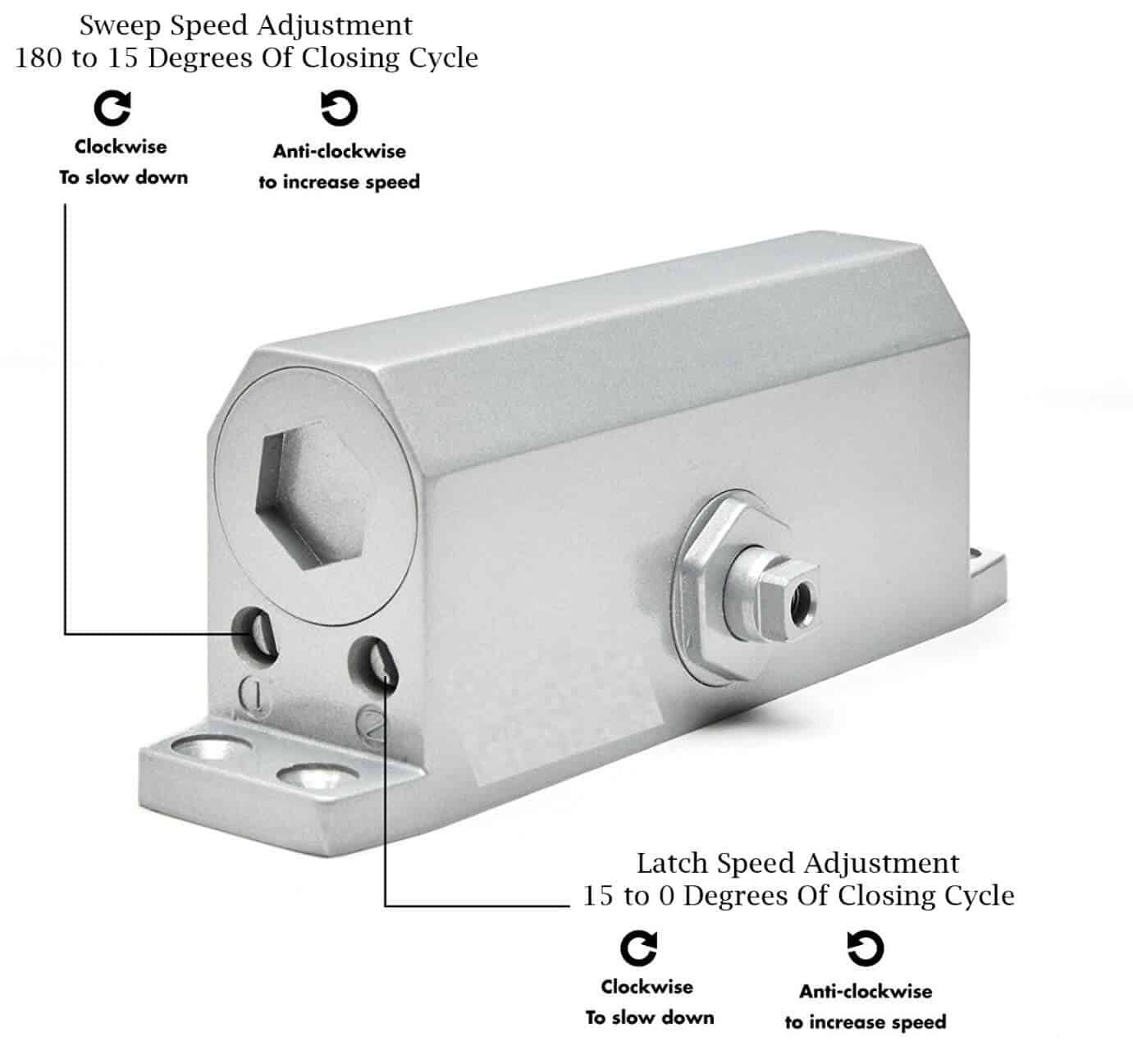
Image Source: Doorclosersusa.com
The closing speed of a door closer is adjustable. To decrease the closing speed, the sweep valve has to be moved in the clockwise direction. Similarly, to increase the closing speed, the sweep valve has to be turned anti-clockwise.
| Also see: Tower bolts: Buyer’s guide to top notch door fittings (Buy now) |
Locking speed function
Similar steps are used to regulate the locking speed of the device. To decrease the locking speed, the latch valve has to be turned clockwise. Conversely, to increase the speed, the latch valve has to be moved anti-clockwise.
With door closers that feature an adjustable locking speed, you can modify the closing speed after setting the locking speed valve. Thus, this ensures that any latch can enter the latch plate and complete the locking action.
| Also see: Door latches: The simplest guide to types & materials (Shop here!) |
Opening buffer function
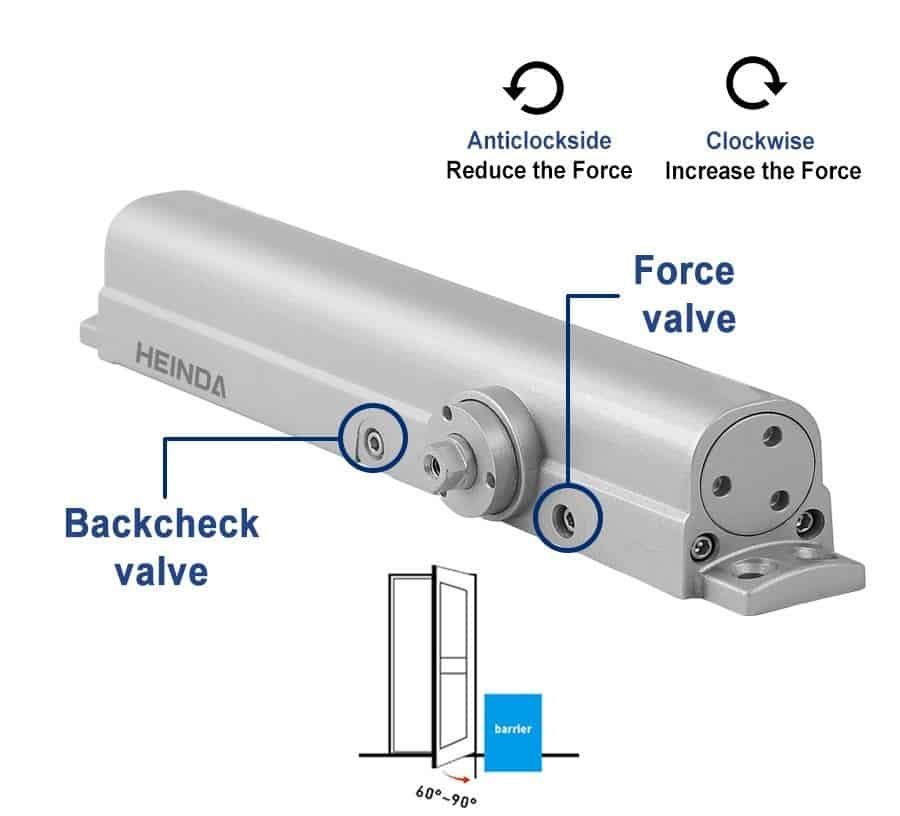
Image Source: Allen Wu on Linkedin
The buffer function in a door closer adjusts the opening speed of the door when the door is opened by excessive force. It ensures that the door doesn’t slam open due to extreme force. Therefore, this function reduces injuries caused by the sudden and violent opening of doors.
| Also see: Door locks: How to choose the right one for an application? |
Delay function
As the name suggests, the delay function ensures that the door doesn’t start closing immediately after you release it. Therefore, it is useful when you regularly need to move heavy objects through the door. The delay function can be adjusted to give a delay time of around 2 minutes to ensure convenient moving.
Stop the door function
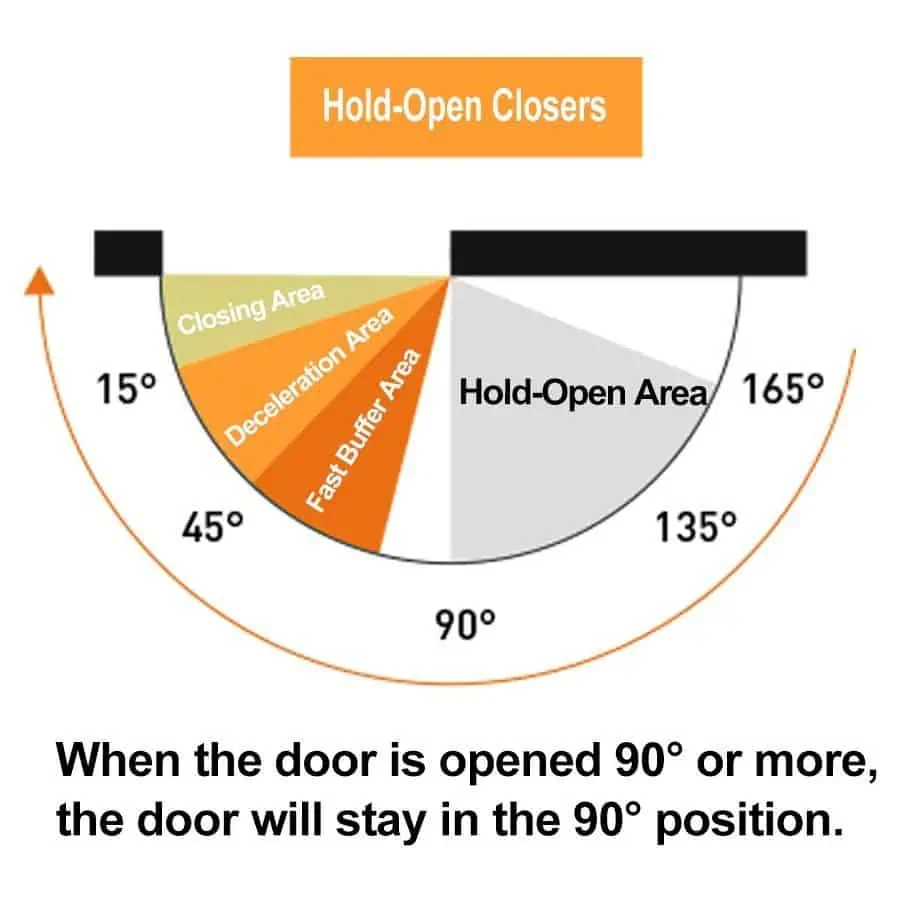
Image Source: Allen Wu on Linkedin
With the help of this function, the door will remain open when it hits a certain position. In the above illustration, the door will remain open in the 90-degree position. If you open the door at any angle smaller or larger than 90 degrees, the door will close automatically. Similarly, to unlock the holding position, just move the door from a 90-degree angle.
| Also see: Different Types of hinges and their usage |
Force level
A door closer has an adjustment screw that adjusts the spring tension. Usually, door closers come with a pre-set force level which is generally 3. The spring tension can be varied within a range of 1 to 6 and is based on the door’s weight.
Types of door closers
Based on working
Manual door closers
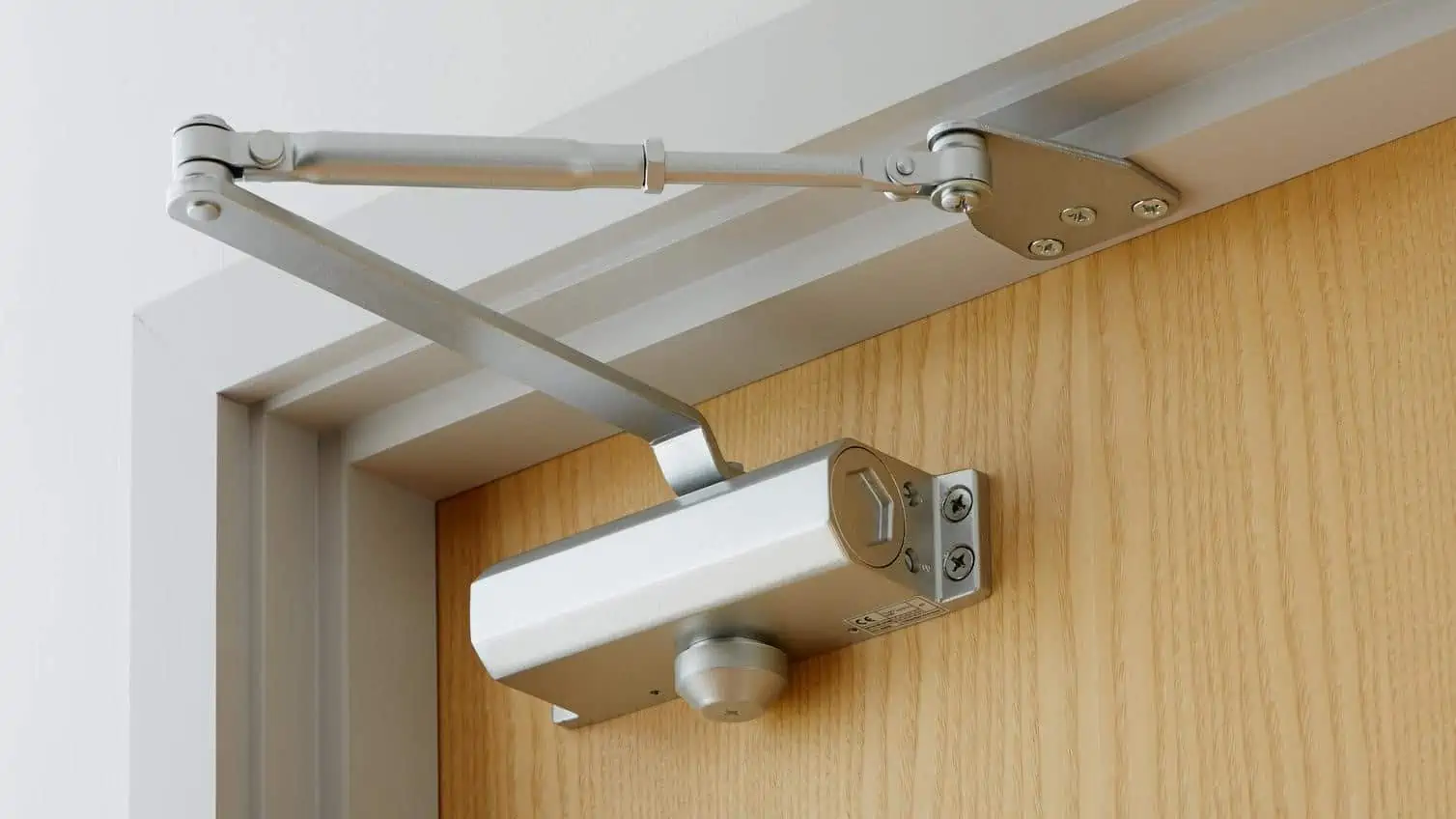
Image Source: Howdens.com
A manual door closer uses a traditional spring to store energy that is generated from opening the door and releases it to facilitate closing. In addition, some of these door closers come with adjustable spring strength that makes it easier or harder to open the door. Also, most manual door closers use oil-filled hydraulic dampers to restrict the closing speed.
Automatic door closers
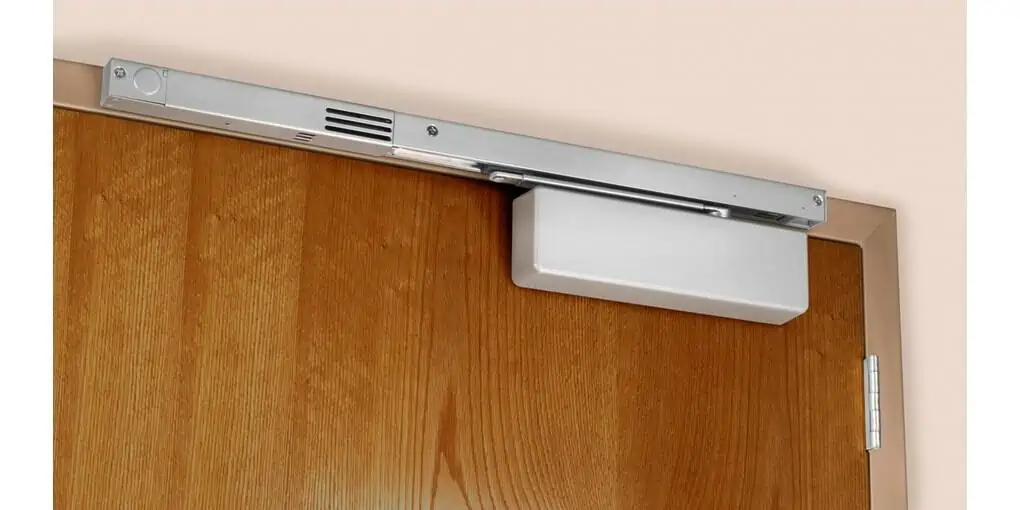
Image Source: Tykel.ca
An automatic door closer is more aptly known as a door opener. Just as the name suggests, it opens and closes the door automatically. The automatic opening and closing actions of the door are triggered by motion detection or some other device connected to the closer. Also, automatic door closers can be kept locked until a code or a swipe key is used to unlock them. Therefore, these are also used for enhancing the security of a place.
Electromagnetic door closers
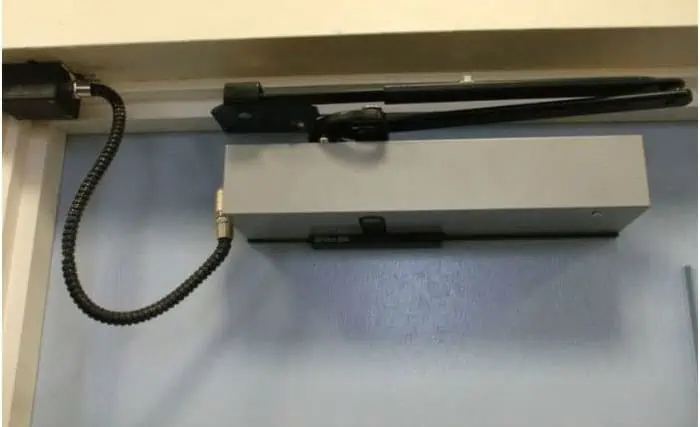
Image Source: Ebid.net
These door closers are generally connected to a building’s fire system. These are used to keep the doors open until there is a fire. In that case, the power supply to these closers is cut off by the fire alarm system and the doors are closed. In this way, electromagnetic door closers prevent the spread of smoke during fires. When installed, these also maintain the fire rating of the door.
Based on styles
Surface mounted
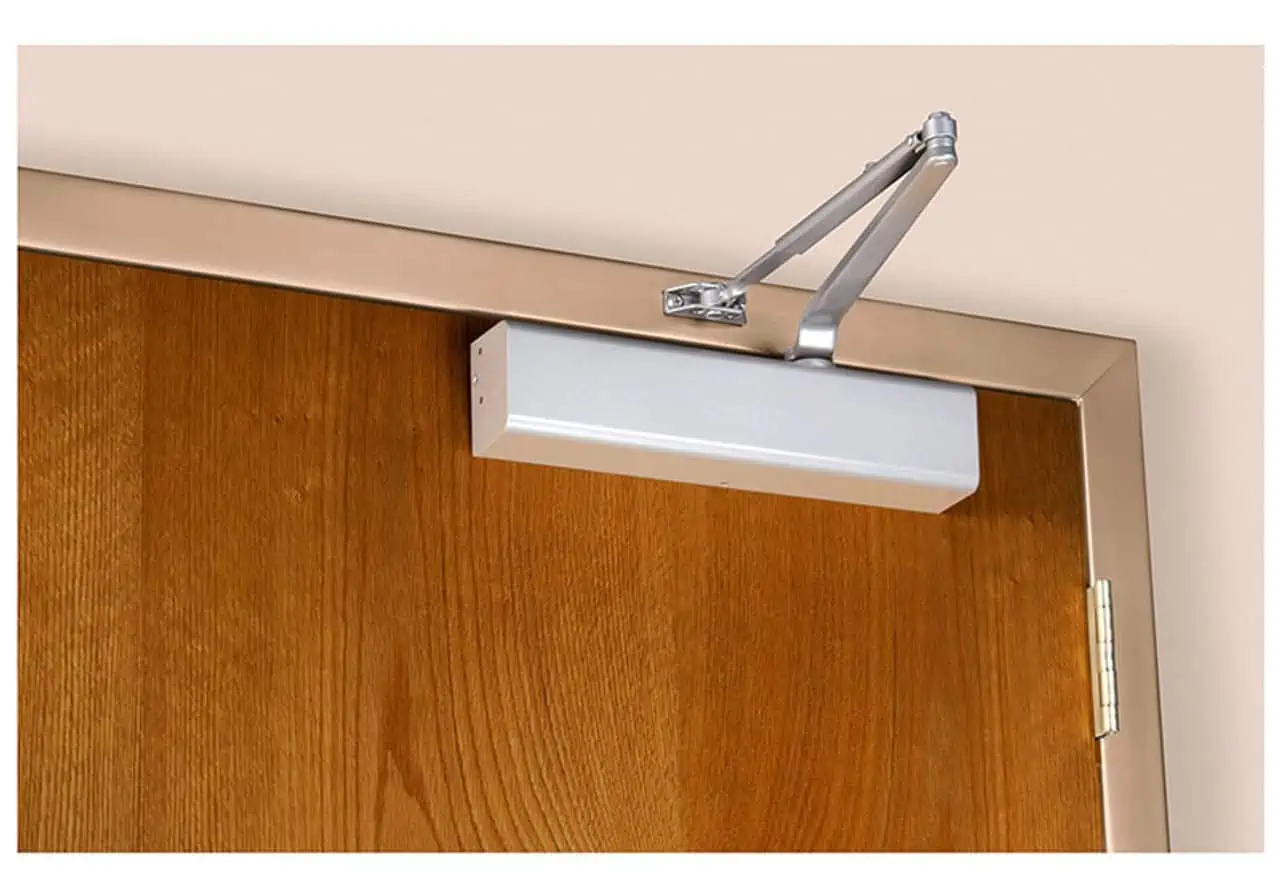
Image Source: Theoldhouse.com
These are comparatively easier to install and more cost-effective. Usually, they are fixed behind the door right next to the hinges. So, as the door closes, the arm of the closer retracts to its closed position. Also, it is possible to configure them to make them more applicable for different needs.
For a surface-mounted door closer, various types of arms are available, depending on the application that adds extra functionality. These include the following:
- Hold open arm: By partially opening the door, a nut is tightened, causing the arm to become stuck at an open point.
- Dedicated parallel arm: Although it lacks the strength of a regular arm, it lies parallel to the door when closed instead of extending outward.
- Stop arm: Prevents the door from opening excessively and slamming into a wall or other object.
Concealed in frame
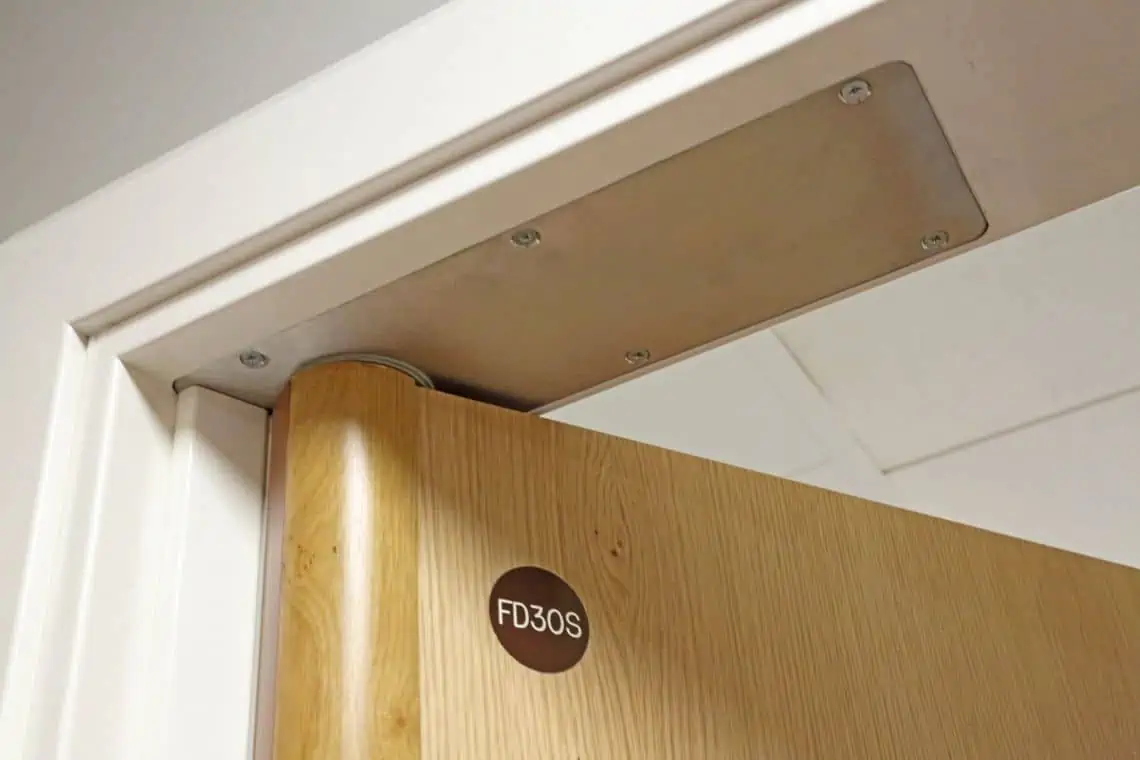
Image Source: Safehingeprimera.com
A concealed door closer is used to keep the aesthetic appeal of a door intact. Therefore, these are hidden in the door jamb. When the door is closed, these can be entirely hidden because they fit in the morticed recesses in both the door and the frame. For that reason, this type of door closer is more commonly used in the case of doors that open both ways as used in high foot-traffic areas.
Concealed in floor
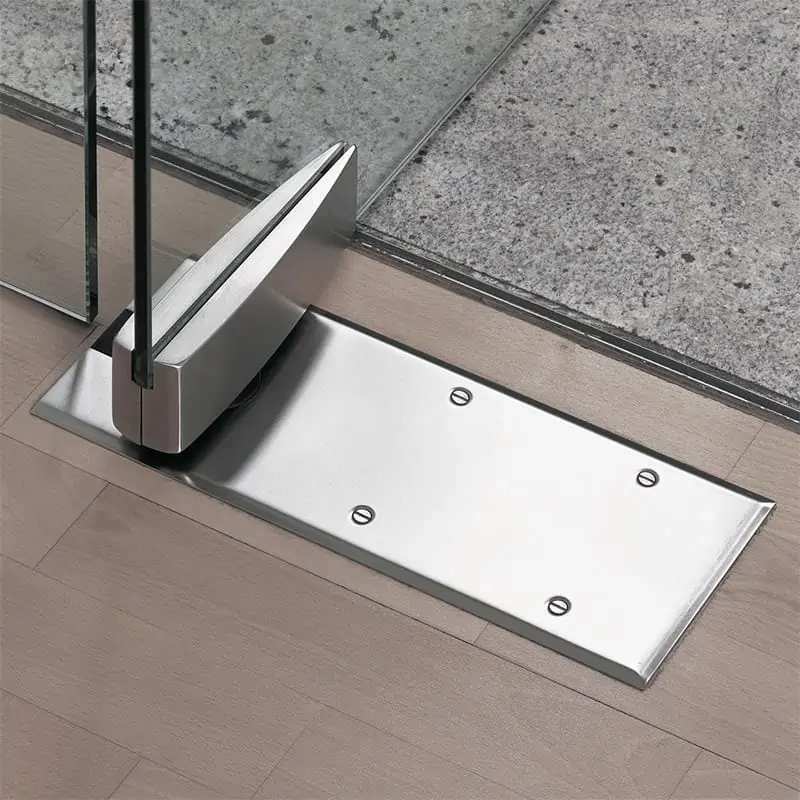
Image Source: Alibaba.com
These are also known as floor closers. As is clear from the name, these are concealed on the floor making them invisible. Typically placed under the door, they control the closing action with the help of a bar. Therefore, this type of concealed closer cannot be seen even when the door opens. Also, these come with an open setting which holds the door in an open position.
Working principle
As you open a door, the spring in the door closer stores the mechanical energy generated by the action. The spring then releases the stored mechanical energy and causes the closing of the door. Also, this spring tension is controlled by hydraulic fluid. When the door opens, the hydraulic fluid moves from one reservoir to another. Similarly, as the door closes, the hydraulic fluid travels back to the previous reservoir going through a series of valves. These valves control the speed of the door. Therefore, door closers come with adjustable swinging and latching speeds.
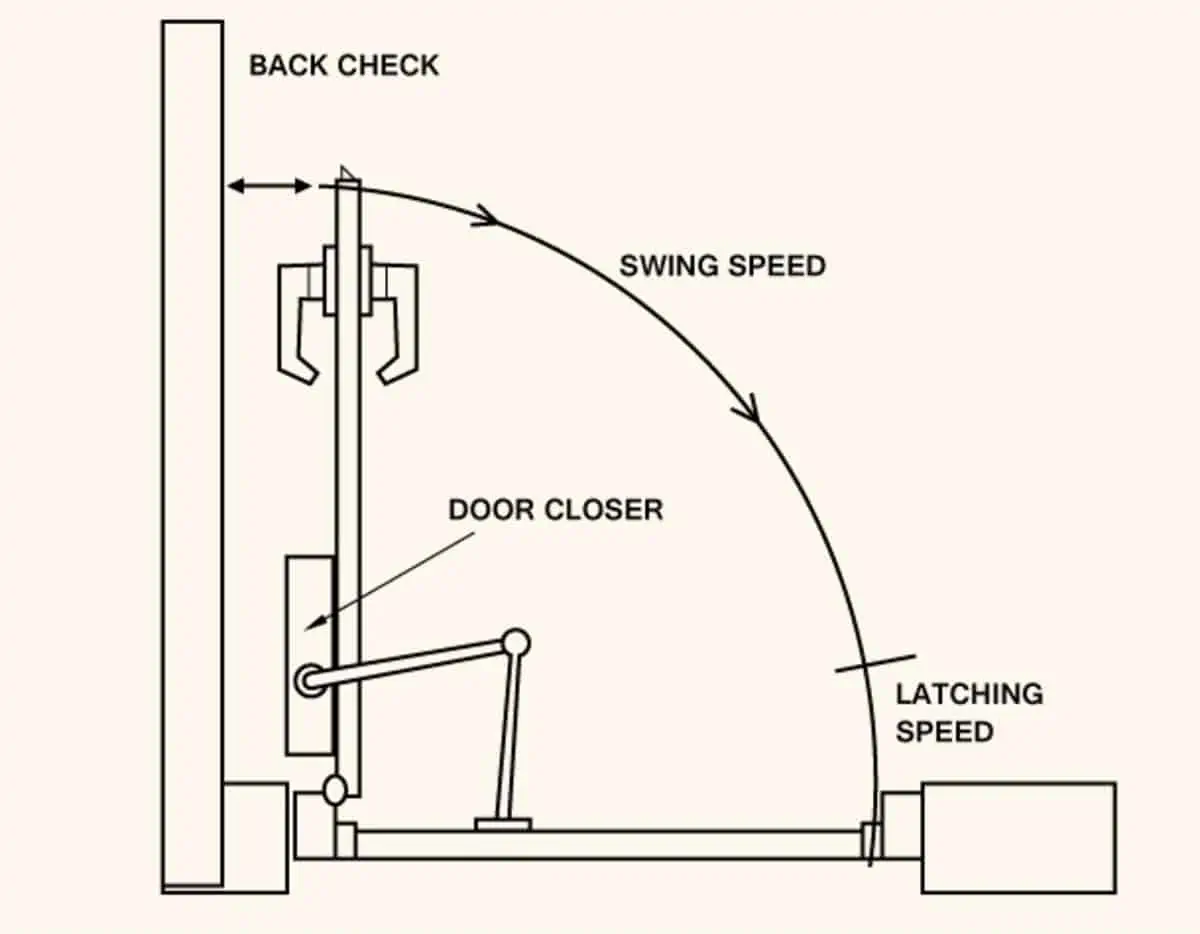
Image Source: Dengarden.com
Swing speed is the speed at which the door closes from fully open to approximately five degrees closed position as can be seen above. It is also known as closing speed.
Latching speed is the speed at which the door closes at the last few inches before the door reaches its latching point. This is usually the valve closest to the hinge, located near the sweep. It is also referred to as locking speed.
The back check adjustment provides resistance when the door opens past a particular point. This hydraulic door closer option stops the door from opening too quickly and crashing against a wall or other obstructions. The door’s pace during the balance of its opening cycle is controlled by how much the opening swing is slowed. This is the valve commonly found alone and facing away from the hinges.
Buy functional door closers here!
Häfele Overhead Door Closer
| E N Q U I R E H E R E |
Ebco Concealed Door Closer
| E N Q U I R E H E R E |
Yale YDC-2022 HO Door Closer
| E N Q U I R E H E R E |
Hettich Door Closer with Standard Arm
| E N Q U I R E H E R E |
Godrej T620 Parallel Arm
| E N Q U I R E H E R E |
Geze TS 5000 L
| E N Q U I R E H E R E |
Dorma TS 73 V
| E N Q U I R E H E R E |
Dormakaba ITS 96 Automatic Door Closer
| E N Q U I R E H E R E |
Dorset Fire Rated Door Closer
| E N Q U I R E H E R E |
Ozone Concealed Door Closer CDC-3800E STD DGRY
| E N Q U I R E H E R E |
Conclusion
When it comes to enhancing the safety of your residential or commercial space, doors remain an important element. Especially in an office setting where foot traffic is typically high or in a store where there is a frequent shifting of heavy loads. A door closer comes with a hydraulic damper system and a spring to store mechanical energy. The spring stores the mechanical energy produced by the opening of the door. Later, it releases this energy due to which the door closes.
These hardware fittings have adjustable closing and opening speeds which can be altered by turning the sweep and latch valves. Furthermore, these offer an opening buffer function that prevents the door from slamming if opened with a lot of force. Also, their delay function allows the doors to shut after some delay. Finally, they come with a stop door function that holds the door open and a force level adjustment function adjustable within the range of 1-6.
Now, a door closer comes in varied types, from manual to automatic and concealed to surface mounted. Surface mounted are the most popular type while concealed closers are used when the aesthetic of the door is important like in an office space. So, now that you know what the different types of door closers are and how they work, feel free to use the buying links displayed above to enhance the safety of your residential or commercial space today!
|
If you want to buy top-quality door hardware and fittings from the best brands at Wholesale Price, click on the link given below to check your options and submit your inquiries:
WhatsApp us for more details or contact below:
|
*The featured image used in this article is from Doorguysnyc.com









